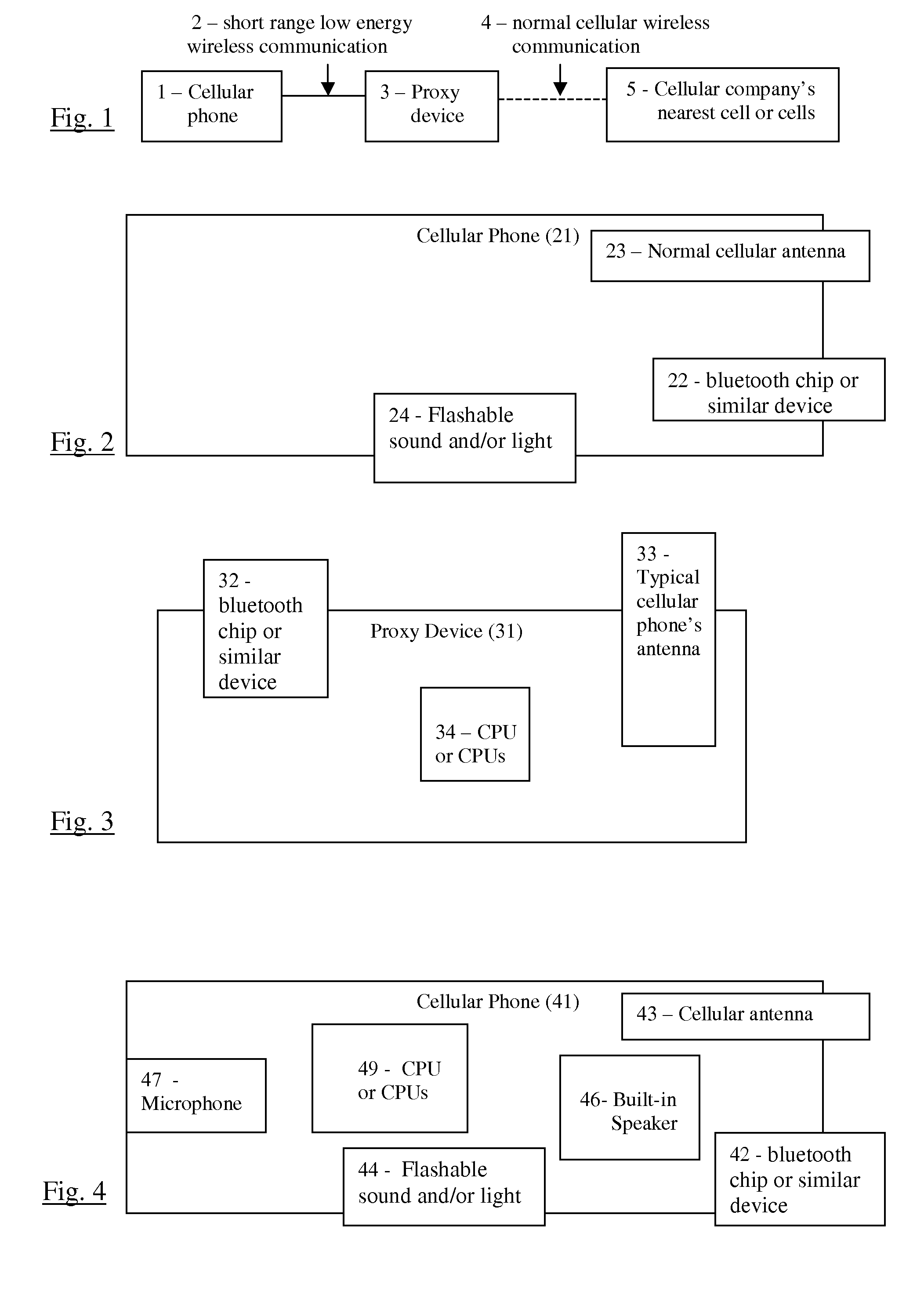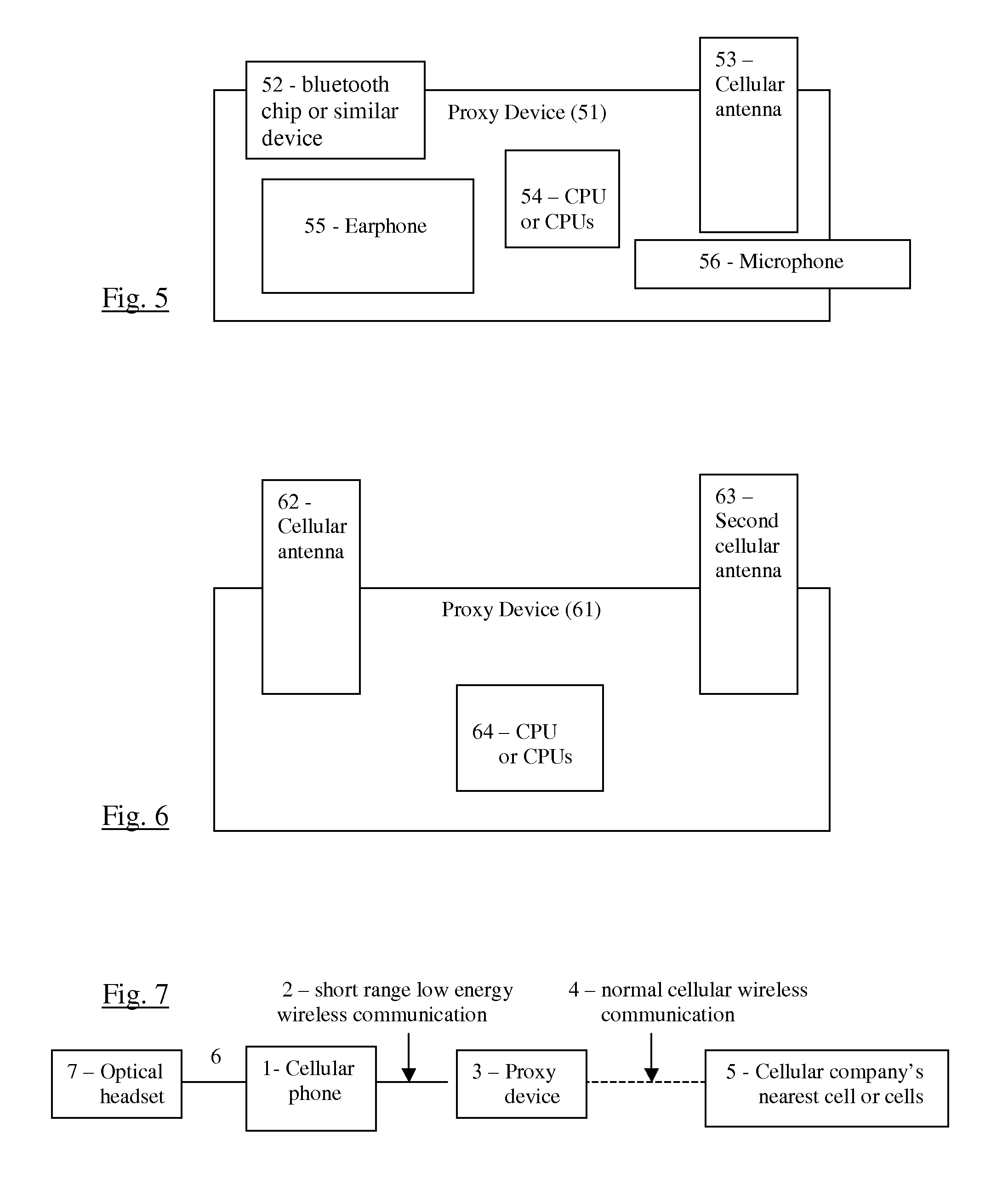Cellular phone that exposes the user's brain to much less microwave radiation than ordinary cellular phones with the help of a proxy (intermediary) device.
a technology of a proxy device and a cellular phone, which is applied in the field of cellular phones, can solve the problems of reminding the user all the time that he is currently using the phone in potentially unsafe mode, affecting the privacy of users, so as to avoid cross-talk with the devices of nearby users, improve privacy, and facilitate replacemen
- Summary
- Abstract
- Description
- Claims
- Application Information
AI Technical Summary
Benefits of technology
Problems solved by technology
Method used
Image
Examples
Embodiment Construction
[0030] All of the descriptions in this and other sections are intended to be illustrative examples and not limiting.
[0031] Referring to FIG. 1, the cellular phone (1) communicates (both ways—to and from) through short range low energy wireless communication (2) with the proxy device (3), which communicates on its other end through normal cellphone microwave broadcast (4) (both ways—to and from) with the cellular company's nearest cell or cells (5).
[0032] Referring to FIG. 2, the cellular phone (21) contains a bluetooth chip or similar device (22) and uses it to communicate (both ways—to and from) with the proxy device (31 in FIG. 3) instead of communicating normally with the cellular company's nearest cell or cells (5 in FIG. 1). In another possible variation, preferably, it has also still the normal cellular antenna and its related circuitry (23), so that it can communicate normally with the cellular company's nearest cell or cells (5 in FIG. 1) whenever it is unable to reach the...
PUM
 Login to View More
Login to View More Abstract
Description
Claims
Application Information
 Login to View More
Login to View More - R&D
- Intellectual Property
- Life Sciences
- Materials
- Tech Scout
- Unparalleled Data Quality
- Higher Quality Content
- 60% Fewer Hallucinations
Browse by: Latest US Patents, China's latest patents, Technical Efficacy Thesaurus, Application Domain, Technology Topic, Popular Technical Reports.
© 2025 PatSnap. All rights reserved.Legal|Privacy policy|Modern Slavery Act Transparency Statement|Sitemap|About US| Contact US: help@patsnap.com



